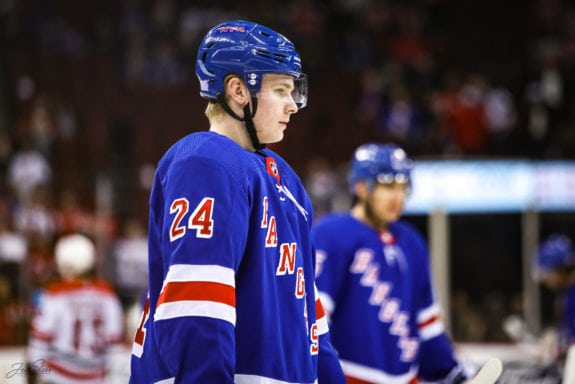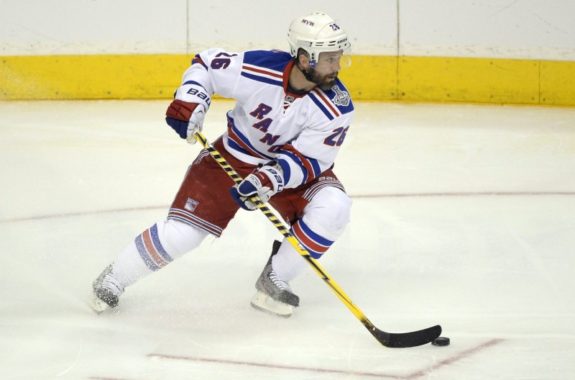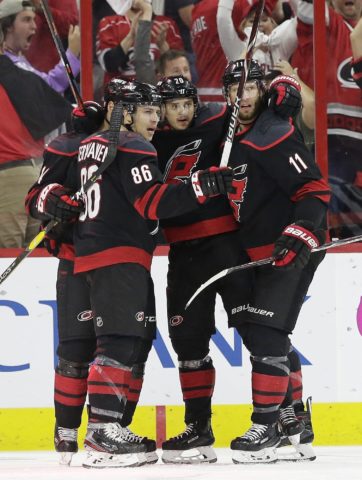The New York Rangers are currently on the outside looking in 29 games into their season as they sit four points behind the Carolina Hurricanes with a game in-hand for the last spot in the wild card race. The Blueshirts were widely expected to be a team that faced growing pains early on, but early success has begun to turn heads around the league. The lucrative contracts handed out to Artemi Panarin and Jacob Trouba during the 2019 offseason have proven to be worth it as of now. The youngsters on the Rangers, such as Filip Chytil, Kaapo Kakko, Adam Fox, Ryan Lindgren and Tony DeAngelo, are all receiving significant ice time and contributing. But, even with early-season success and being in the thick of the playoff race, the Rangers must continue the trend of selling assets at the deadline.
Let the Kids Develop
Ever since the Rangers’ front office released the famous Feb. 2018 letter declaring that the team will be heading in a new direction, the team has grown to have one of the best prospect pipelines in all of the NHL. With the likes of Kakko and Chytil leading the way offensively, there is still more room for development with other prospects.

The Rangers’ American Hockey League affiliate, the Hartford Wolf Pack, have center Lias Andersson and defenseman Joey Keane, who are two realistic call-ups later in the season if multiple roster spots are opened through trades. On the current roster, some uninspiring talent and a few producing veterans remain locked into the lineup with little future upside. Ryan Strome, for example, will be a player that the Rangers should look to deal at the deadline. The 26-year-old center has tallied 26 points in 29 games, making him a possibly hot commodity for other teams. Trading players like Strome, Michael Haley, Greg McKegg and maybe even long-time Ranger Chris Kreider will open up roster spots for young players to move up to the NHL roster and develop.
Changing the Rangers’ Deadline Norm
The Blueshirts have a long history of buying at the deadline and consistently chasing after big names. Acquiring aging talent for prospects and picks used to be the name of the game. Players like Martin St. Louis, Keith Yandle and Eric Staal were all highly-touted players on the market when the Rangers traded for each one of them in recent years.

However, Rangers’ general manager Jeff Gorton has taken this team in a different direction and the team must continue to replicate their past seasons’ deadline successes. Over the last two seasons alone, the Rangers have dealt the likes of Ryan McDonagh, Rick Nash, Mats Zuccarello, Kevin Hayes and many more assets.
Related: Martin St. Louis, the Little Big Man
In return, the Rangers have used acquired picks to draft some of the best prospects in hockey, including defensemen K’Andre Miller and Nils Lundkvist, forward Vitali Kravstov, and goaltender Igor Shesterkin. Even if the Rangers are close to contending come the 2020 trade deadline, it would be wise of Gorton to continue to stockpile the already spectacular group of young talent the Rangers have gained in recent seasons.
Mimicking the Hurricanes
The Rangers must use a similar method to what the Hurricanes went with at the 2019 trade deadline. The Hurricanes, who were weeks away from eventually ending their nine-year playoff drought, stayed pat at the usually chaotic deadline.

After being quiet on the trade market and sticking with their core players, the Hurricanes went on a miraculous playoff run that ended with them reaching the Eastern Conference Final, where they were swept by the Boston Bruins. Now, since they didn’t rid of their assets or buy further into their own hype last season, it’s resulted in early success in the 2019-20 season. The Rangers must employ a similar display of discipline and strategy that the Hurricanes utilized at the trade deadline to ensure future success.
Related: New York Rangers Need to Move on From Chris Kreider
The last two seasons have seen the Rangers sell assets at the deadline, and the upcoming February trade deadline should be no different. The future success of the franchise depends on continuing to trade players for draft picks to stockpile prospects and add even more talent to the prospect pipeline, despite the possibility of contending for a playoff spot now.